Indoor Croton plants don’t bloom very often. Outdoor Crotons bloom year-round under the right conditions. The flowers are tiny and yellow, clustered into star shapes. You can make indoor Croton bloom, too, with phosphorus fertilizers and ample sunlight.
Many people don’t even realize that their Croton plants can bloom due to their rare occurrence.
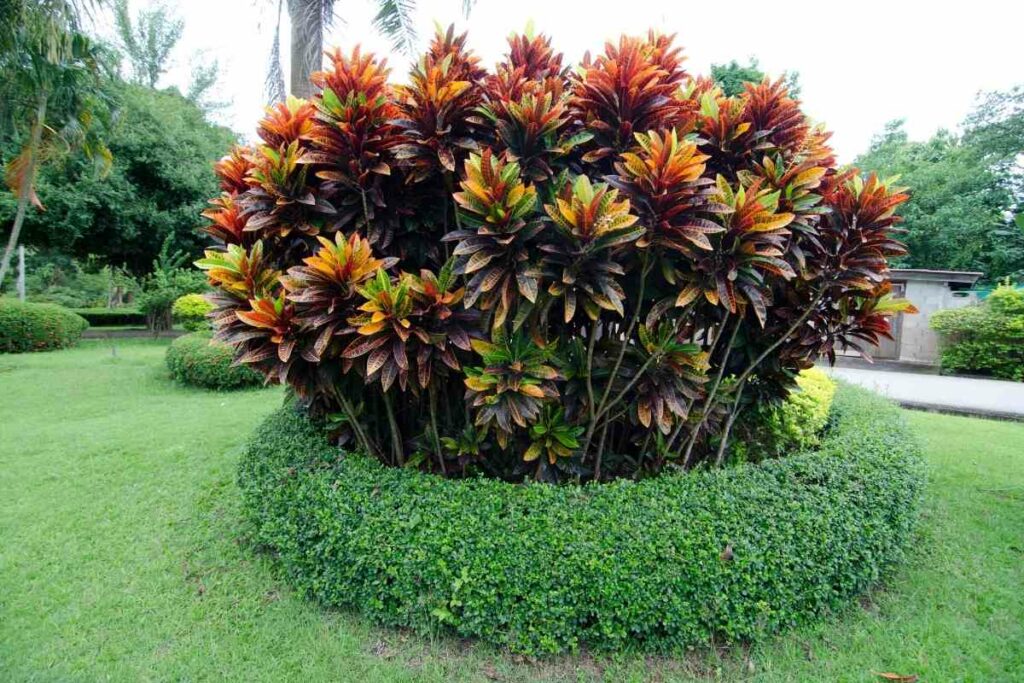
If you want your Croton plant to flower, you’ll need to take several additional steps to encourage it to bloom.
Once you do, the plant can bloom all year long.
Table of Contents
When Do Croton Bloom?
Croton blooms year-round, so you can have them flower at any time.
It’s very rare for indoor Croton to flower, although outdoor varieties constantly stay in bloom. If you want your plant to bloom too, you’ll need to know how to take care of it.
Crotons are very picky about their conditions. They won’t thrive if they’re in a draft or there isn’t enough humidity in the air.
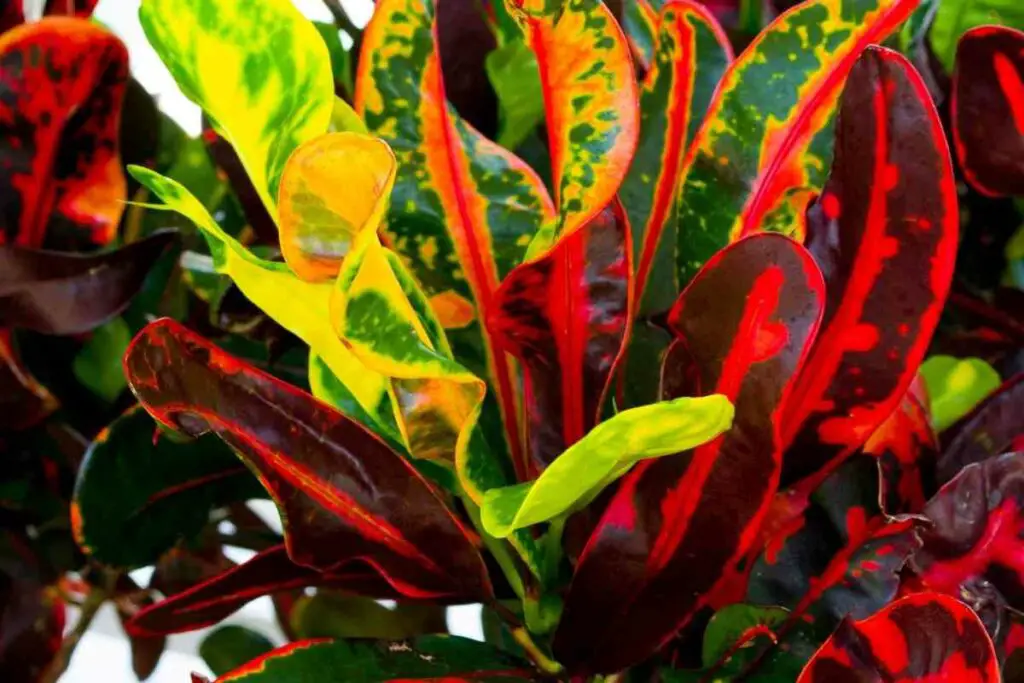
Even the soil can impact whether or not they flower. You’ll need to focus on controlling the plant’s environment to keep it healthy.
Otherwise, these plants can easily attract insects and lose their glossy appearance.
If they don’t seem to be in good condition, there’s no way for these plants to produce blossoms.
Key Takeaway – Crotons bloom year-round naturally. So, no matter what season it is right now where you live, you can still get your plant to bloom under the perfect conditions.
How Do I Make Croton Bloom?
Getting your Croton plant to bloom will require hard work and patience.
These plants tend to dislike most indoor environments, making it harder to produce flowers.
If you want your Croton to bloom, try moving it outside first.
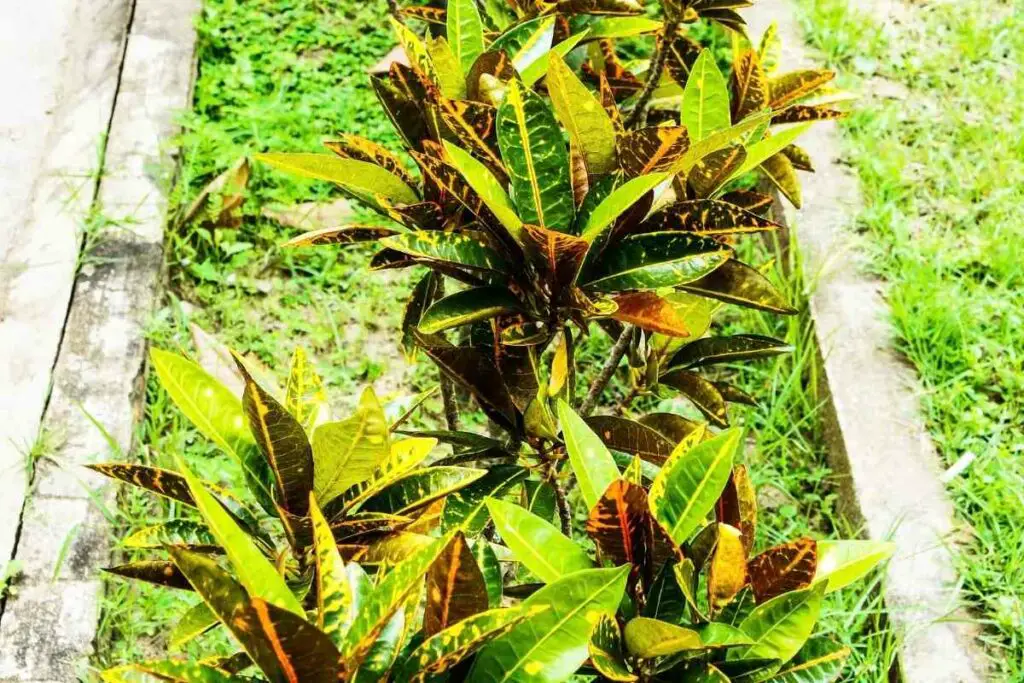
You want them to have access to bright sunlight and acidic soil with plenty of nutrients and moisture.
These plants also do the best in temperatures between 70 to 80 degrees F (about 21 to 26 degrees C).
When you move your plant out into the warm weather, the odds of blooms appearing increase greatly, it’s extremely rare for the flowers to appear while inside a home.
Crotons are very sensitive to the cold
You should always bring them inside if you expect the temperature to drop below 50 degrees F (10 degrees C).
If you can’t take the plant inside, you can try protecting them with gardeners’ blankets to prevent the frost from harming them.
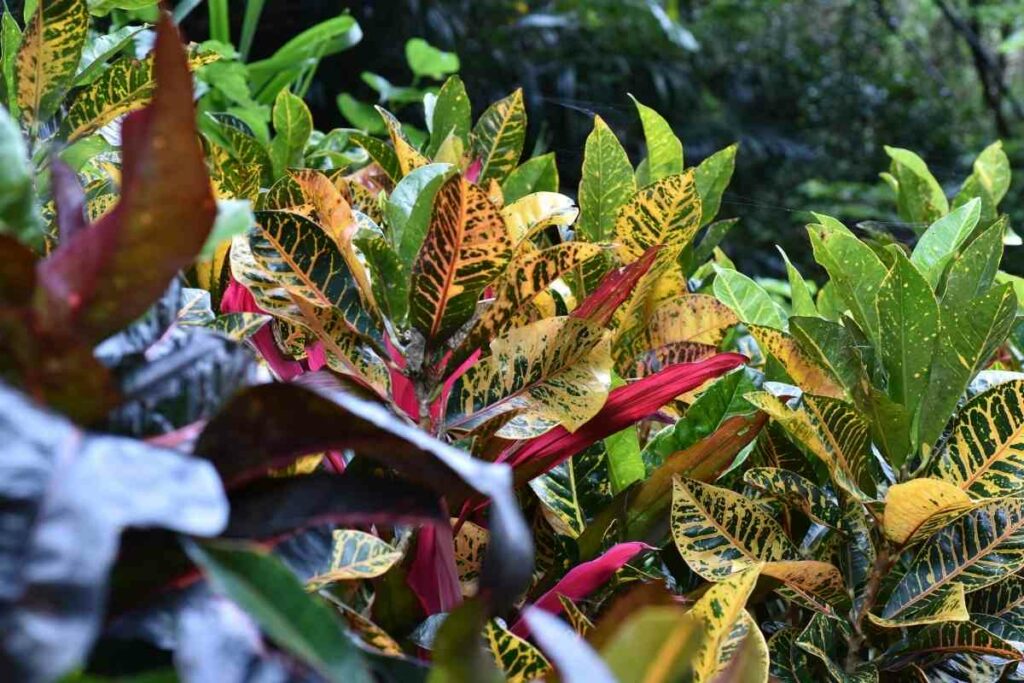
Lastly, you can encourage the plant to flower by adding fertilizers rich in phosphorus to the soil.
You can use any store-bought fertilizers, but there are also plenty of natural options you can use.
These include:
- Manure
- Compost
- Bone or fish meal
- Pulverized rock phosphate
What Do Croton Blooms Look Like?
Croton blooms look like small yellow stars.
They form groups and hang down in large clumps. The flowers can even look like vines if they get long enough.
Crotons also have female and male flowers, which look slightly different.
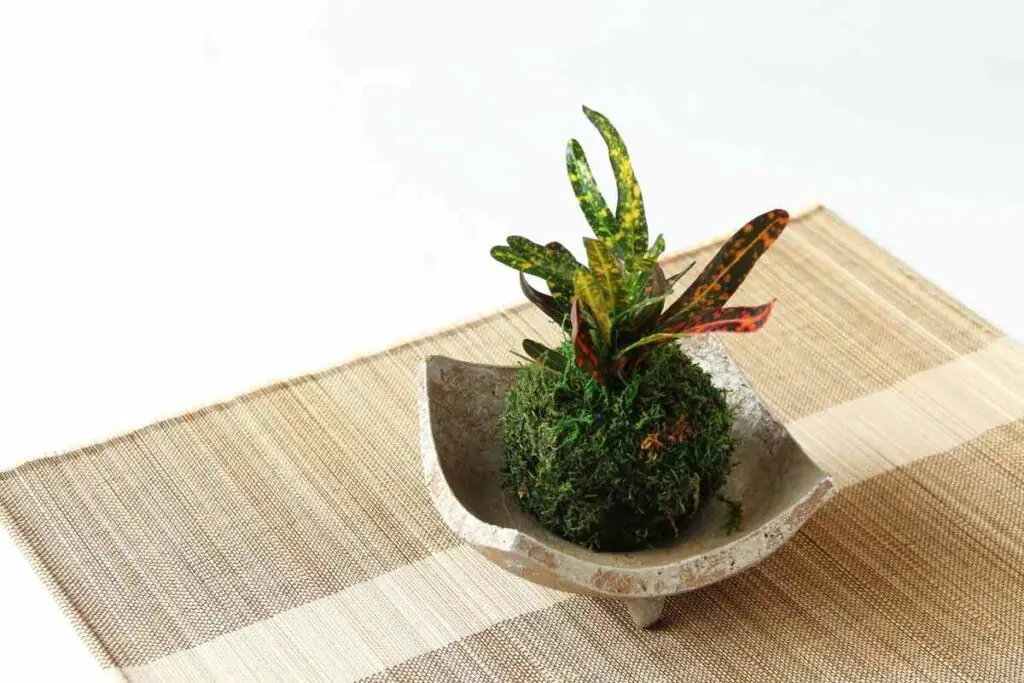
The male flowers are the ones that have many stamens and make star-shaped clusters.
The female flowers are more yellow and don’t have petals.
After Pollination – The female flowers produce tiny fruits with three small seeds inside them. You can pollinate the flowers on your own using different Croton plants- it’s very uncommon for both the male and female flowers to be open simultaneously on the same plant.
Ants are the main pollinators for Crotons, so they’ll usually make seeds when outside.
Overall, you’ll notice when your Croton plants begin to bloom right away.
You’ll see small yellow stars that stand out against the deep green gloss of the rest of the plant.
How Do I Care For a Croton?
Since crotons are very picky, you’ll need to take good care of them.
It’s worth mentioning that these plants are poisonous, so you’ll want to keep them out of homes with small children and pets.
First, place the Croton in a place with lots of bright sunshine.
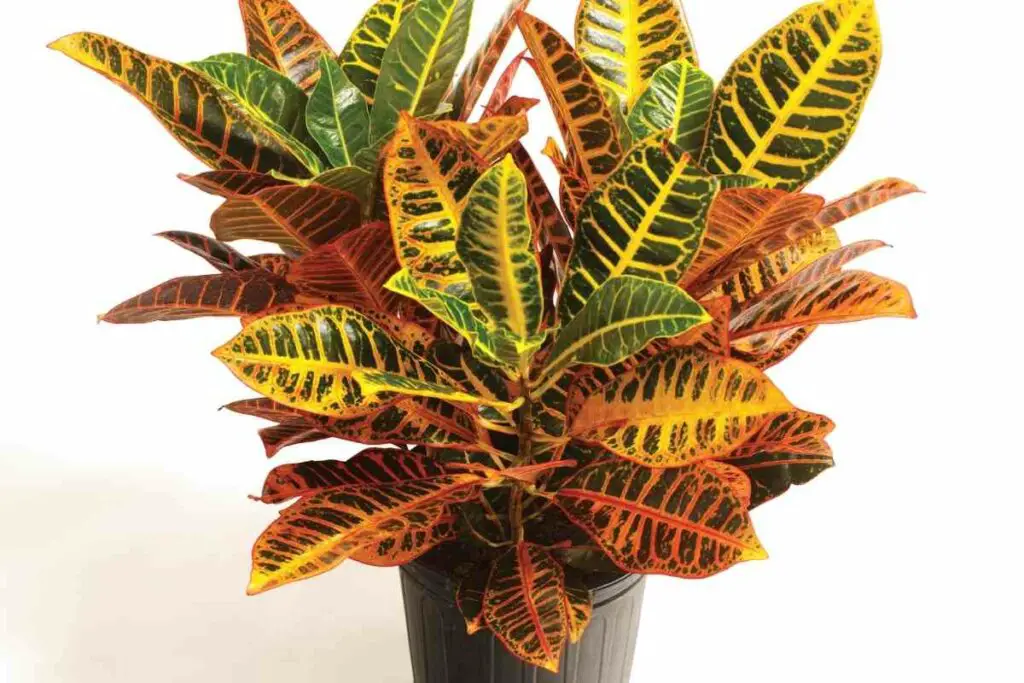
You’ll want to check on the soil every few days- it should feel moist but never soaked. Then, make sure you water it when the soil feels dry to the touch.
You’ll also need to dust the large leaves with a moist cloth at least twice a month.
These plants crave humidity, so make sure to mist the leaves once a week or leave a water tray near the plant.
A humidifier is another option if you live in a very dry area.
The last care tip is to fertilize the plant in the spring and summer months since this is when the plant grows the most.
You want to make sure it has ample nutrition during that time.
Finally – You won’t want to give it fertilizer during fall and winter since the plant needs to focus on maintaining its health during those times.
Are There Croton Concerns?
These plants are typically free of pests and diseases, although they can attract many insects if they start to wither.
They’re also susceptible to common pests, including spider mites and mealybugs.
Crotons are more likely to have issues with common pests when they don’t receive enough humidity. Misting the plant frequently can help you prevent an infestation.
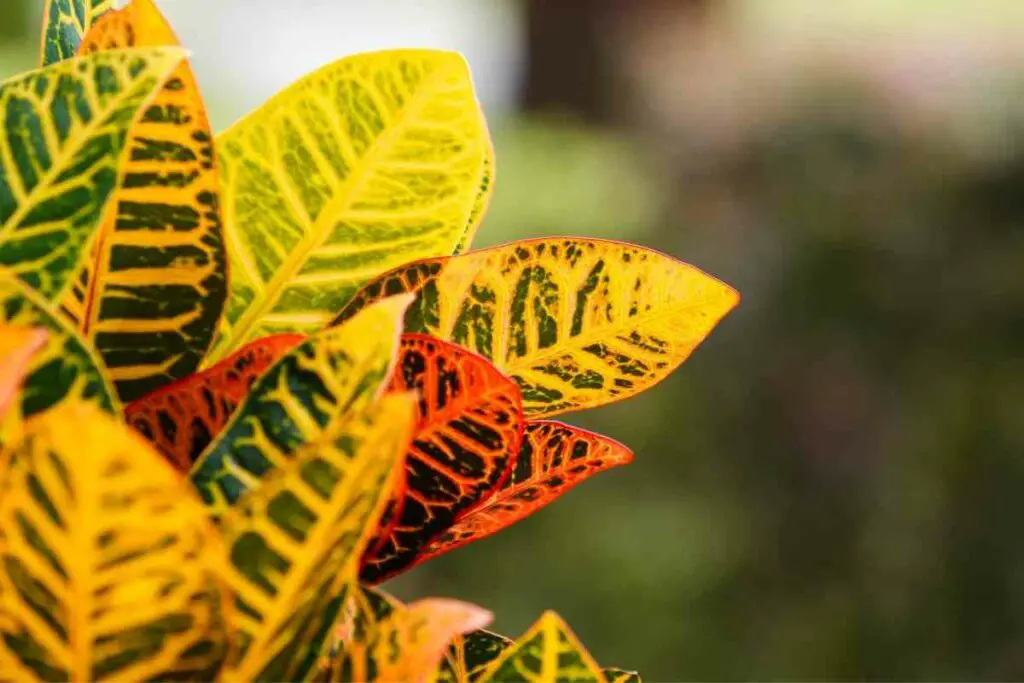
If you do notice insects, you can use insecticidal soaps or oils. Leaving the plant untreated can cause it to die.
Crown gall and Anthracnose are two diseases that can occur in Croton plants.
Heads Up! If it has Crown gall, a type of bacterial infection, you need to dispose of the plant and sanitize the container and tools. This sickness can spread to other plants and kill them quickly.
Anthracnose is a type of fungal infection in plants.
Many people call it leaf blight because it creates light spots on the leaves.
You can help the plant by cutting off any infected leaves and keeping them away from your other plants to avoid spreading them further.
If your plant suffers from a pest infestation or disease, it’s not likely to flower. You should take care of it right away for the plant’s health!
Conclusion
Croton blooms year-round, so you can have them flower at any time.
It’s very rare for indoor Croton to flower, although outdoor varieties constantly stay in bloom.
Croton blooms look like small yellow stars. They form groups and hang down in large clumps. The flowers can even look like vines if they get long enough.
To ensure you Croton Bloom we recommend keeping them outdoors as they tend to dislike most indoor environments.
Also Helpful
- How to Dry Basil Leaves: A Professional Guide
- Is an Avocado a Fruit or Vegetable? Simple Answer and Explanation
- Does Pineapple Have Seeds? Exploring the Anatomy of Pineapples
- Blooming Through Winter: Can I Grow Vegetables Indoors in the Winter?
- What Can You Grow in a Greenhouse All Year Round: A Guide to Year-Round Greenhouse Gardening
- Are Blueberries Blue? Debunking the Myth of Their Color
















